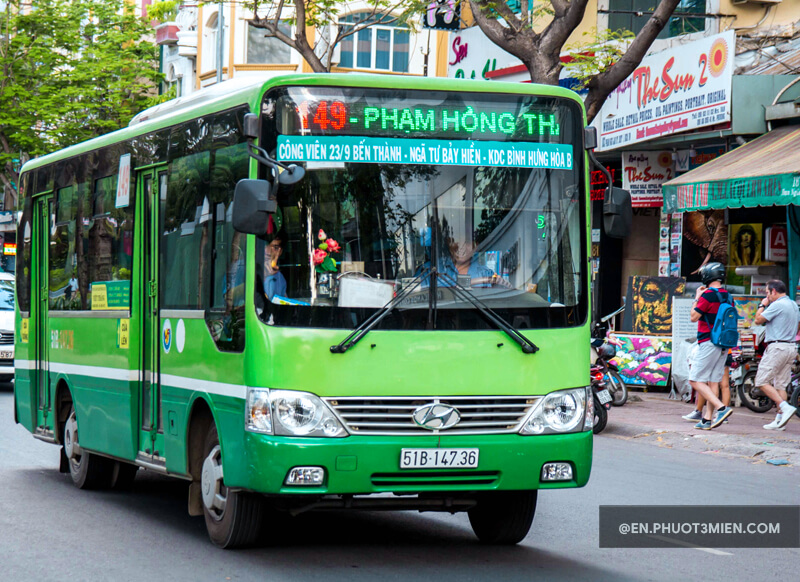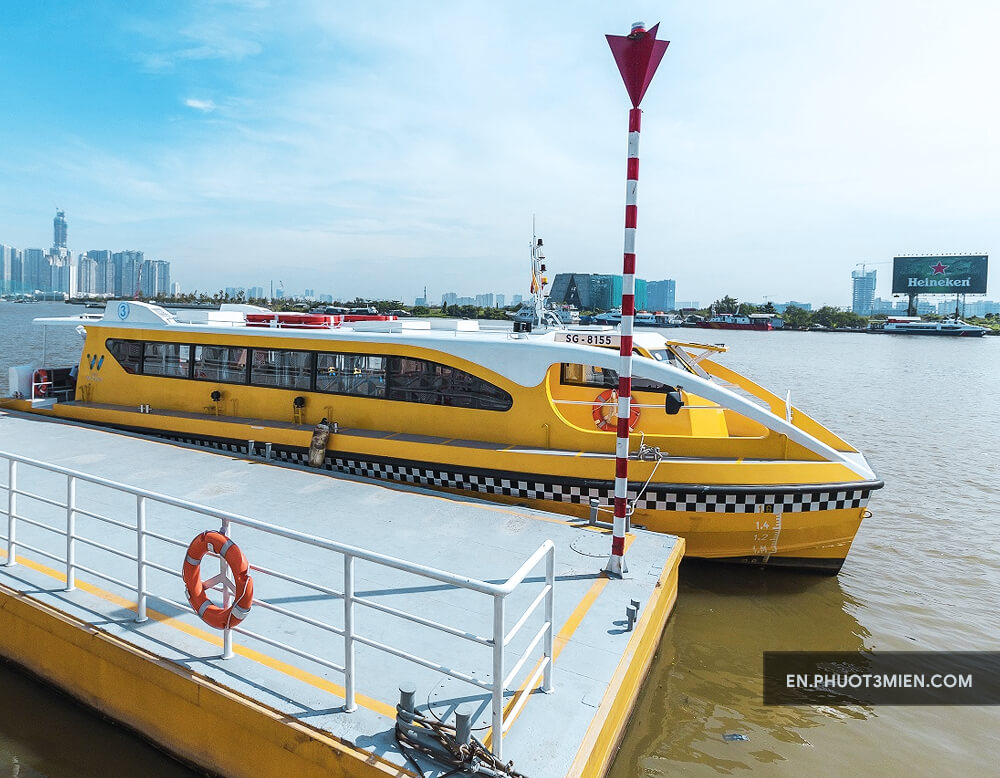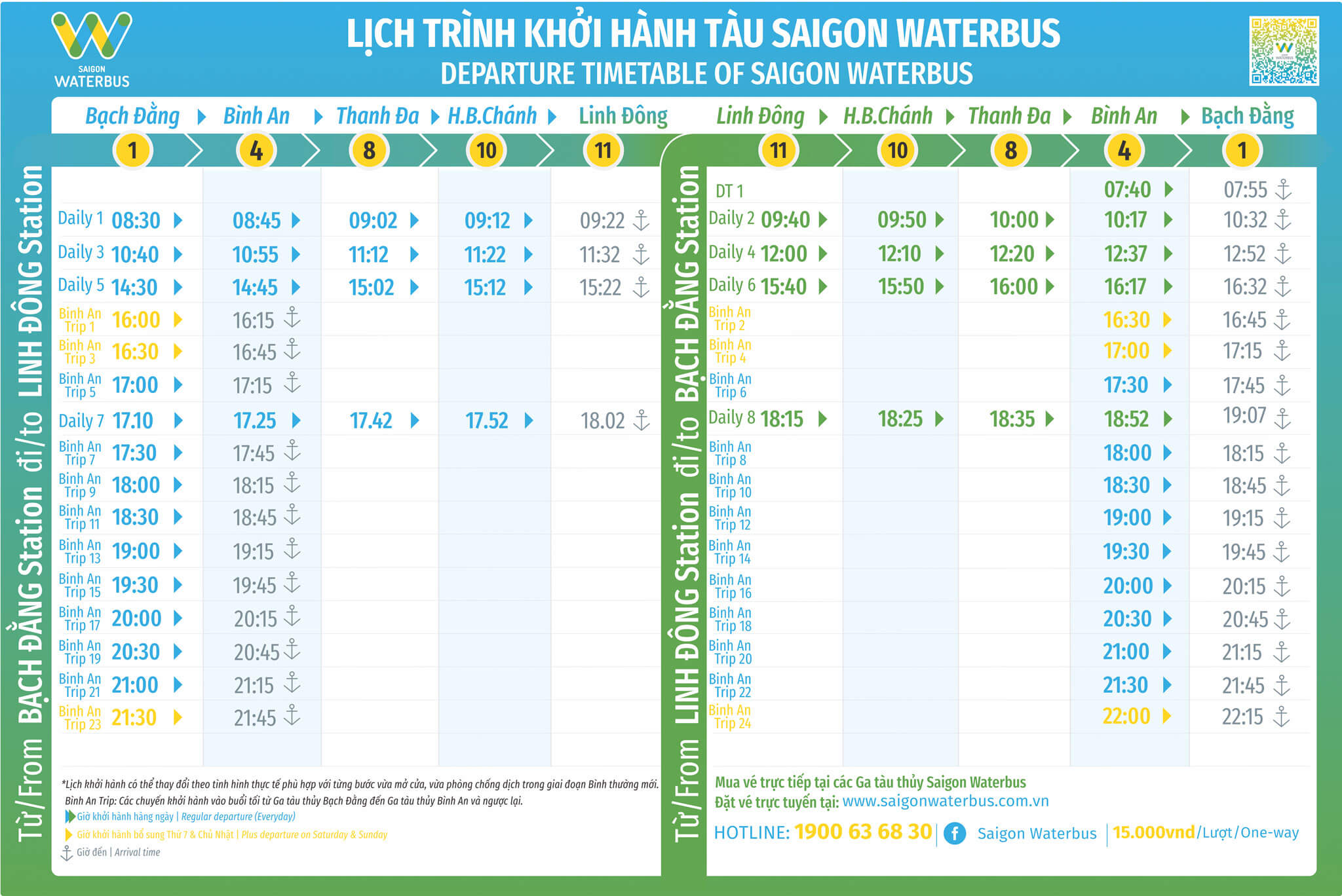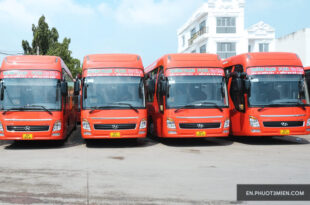Being the economic capital of Vietnam, Saigon or Ho Chi Minh City has an emerging scene that showcases the most desired business hub of the world. This city is young and vibrant, so are the people, with new stores and ideas popping up in every corner every day. It is also known for being home to many expatriate groups, therefore it serves as a city-sized museum of diversity, from the history, the people to the many cultures.
Once you arrive in the city, you will surely be overwhelmed by what it has to offer. You will learn some history and culture lessons from the city’s main attractions, get carried away by the cuisine from the streets to the upscale restaurants, immerse yourself in the recent drinking culture of the western world (you can check that out here: Part 1 – Nightlife & Craft Beers, and Part 2 – Cocktails & Mixology), and explore the grand presentation of many Asian cultures, notably Chinese, Japanese, and even Korean. All together the city brings you an unforgettable experience, as a traveler, and a dynamic and interesting lifestyle, if you are looking for a new home city.

But, you cannot experience all that greatness without getting to the destinations, right? One of the biggest questions that bothers anyone coming to a mega-city, is: “How do I get around?” or “What’s the public transportation like?” Getting around Saigon is one hell of a ride in such chaotic yet organic traffic patterns. Fear not, this city offers a whole range of convenient transportation options that will get you just about anywhere, at anytime. You can have a look at this article to learn how to get around the city in the most convenient way.
Yet, the public transportation system of Saigon still riddles even the ones who live here, and surely challenges those who just set foot in the city. Even though it’s overshadowed by other personal means of transport, the public sector is getting better, more organized, and more technologically advanced, as the city is growing. In this article, I will unveil the mystery of getting around and out of the city via public transportation.
Contents
Internal Public Transportation in Saigon
The key to getting around the city is having your trip planned in advance, especially during rush hours (8 AM and 5 PM) to avoid traffic jams. Honestly, there isn’t any transportation mode that will take you from A to B quickly enough during these busy hours at the moment, even the nimble motorbike taxi. But if you are not in a rush, taking one of the public transports is a great way to isolate yourself from the noisy and dusty streets. The current system consists of a sophisticated bus system, two water bus lines, and several shortcut ferries to suburban districts.
The Bus System
Getting around Saigon by bus is much more pleasant than before with the new refitted buses, for just 5,000 VND to 40,000 VND based on the distance. While taking the bus is the cheapest travel option available, it will consume a bit more time compared to other convenient options. Bus services start at 5 AM and usually pick up the last guests at 6:30 PM, with high frequency of five to 15 minutes, with a lot of flexibility.

For the most convenience, you should use Google Maps to navigate around the city, since it helps with the public transportation. Be aware of the ticket price also, within the city it should cost you no more than 6,000 VND. Getting from the Tan Son Nhat Airport to the city center – District 1 is easy and hassle-free with the help of high quality bus lines of 49 and 109. They operate until 1:30 AM, and cost around 12,000 VND (twice as much) and the service is available in English.
For those of you who are staying much longer in the city, you can explore the online bus map: https://busmap.vn/ and work your way around even more. It provides as much details as you need in English, including the route of each line, the stops, the nearest departure as well as the operation time. There is also a user-friendly app available.
The Experimental Water Bus
In the end of 2017, Saigon began experimenting with a new public transportation system: the water bus line along the Saigon river. The project promised a more sustainable approach to transportation in and out of the city, and vowed to contribute to the improvement of the whole waterway system of Saigon and the surrounding neighborhoods. Right now, there is only one line available with five stops:
Bach Dang (Dist. 1) – Binh An (Dist. 2) – Thanh Da (Binh Thanh Dist.) – Hiep Binh Chanh (Thu Duc Dist.) – Linh Dong (Thu Duc Dist.).
You can check the map for more information
it also comes with nearby buses for your convenience, and also the timetable here: https://www.saigonwaterbus.vn . The ticket is 15,000 VND.

For the time being, you should expect a bit of queuing time, and the lack of stops is inevitable, since it is just a newly developed transportation. The gaps between the departure times fluctuate from around 30 minutes to two hours, due to the insufficiency of the vehicles, therefore you should check the timetable carefully. While having a sluggish opening of long waiting queues and time, taking a water bus now is more pleasant and one of the best forms of transportation for those of you who want to explore the city’s skyline as it transforms from the downtown of District 1 to the new arising metropolitan area of District 2 and the tranquility of suburban Thu Duc District.
In the future, more water buses are coming, together with more lines traversing along most of the 1,000 kilometers of waterways in Saigon. The upcoming package is going to include electric transit buses from the water stops to nearby hubs and vice versa.
The Ferries – Most Dated Public Transport
Not many people consider this mode of transportation nowadays with the rapid development of the city’s infrastructure. Before having those big bridges and the underground tunnels, ferries were the only way to get from one bank of the Saigon river to the other. Still, there are some ferries around the city, and since they are all further away from the city center, you are not likely to come across one during your stay in Saigon. And if you fall in love with the curvy river of Saigon, you should check this article by Eleanor, all about the things you can experience while on the soft rapids.
But if you have either Vung Tau or Can Gio on your bucket list, and you plan to get there via your own motorbike, taking a ferry is a must or you have to spend an extra hour driving around. It is also a unique experience, so why not?
When you ride to Vung Tau, take the Cat Lai Ferry in District 2, and to get to Can Gio, you must take either Binh Khanh Ferry or Hiep Phuoc – An Thoi Dong Ferry in Nha Be District (no bridges yet). The ferry ticket is only 5,000 VND and it takes about 30 minutes to get to the other side.
Getting Out of Saigon
We have covered a lot about how to travel to many destinations in Vietnam in our previous articles, and usually a lot of the options require a stop in Saigon. Therefore, I will just do a quick recap about intercity traveling from Saigon to pretty much everywhere else in Vietnam.
Flying – No Sweat!
From Saigon Tan Son Nhat Airport (SGN) there are direct flights to almost every major city in the country, with the nearest one being Da Lat’s Lien Khuong Airport (DLI). Every flight takes less than two and a half hours, and the ticket can be bought easily on the internet, the same way you entered Vietnam.
Upon arrival in Saigon from outside of Vietnam, you may fiddle a bit with visa-related procedures and navigating the airport . Once you are in, getting out of the city on an airplane is not any issue. Flight common sense from city to city is all you need to navigate our airport system.
The Old Mighty Train
One of the most exciting experiences that you should try in Vietnam if you have plenty of time is going around the country on the vintage railway machine. Technically speaking, the trains should be displayed in museums as relics from the Soviet time due to today’s standards, and parts of the rails are from the beginning of the 20th century. Even having gone through a lot of refurbishment since 1986, the train is still running at an average of 60 kilometers per hour.
In fact, this slow speed gives you more time to savor the beauty of Vietnam along the way, and this is the main reason why travelers are taking the train. And not everywhere in the world can you spend nights on a train and experience everything that comes with it. From 2020 to 2035, the whole railway system will gradually change into a high speed intercity train (same as the Shinkansen in Japan, up to 350 km/h).
That is far off, so for the next 20 years to come, you can still enjoy the steady picturesque scenery on the old mighty train of Vietnam. You can book a ticket now, on this user-friendly website: https://dsvn.vn
Pro tip: Always go for a sleeping berth if possible. Anything else is not worth your back and butt.
Long-Distance Coach & Sleeper Bus
This is by far the most budget public transportation in moving around Vietnam. Therefore, I advise you to always get on a comfy, well air-conditioned sleeper bus for a trip lasting more than three to four hours. You do not want to save a couple of bucks and then survive a nightmarish ride for a whole day on a bumpy coach, with a hint of puke and local fermented foods in the trapped air.
Tickets can be booked easily here: https://vexere.com/en-US , commission-free. Additional information that you should note down includes the departing station and whether or not they provide transit from your place to the station.
Hydrofoil to Can Gio & Vung Tau
This is the most unique and most effective time-saving option to get to Can Gio and Vung Tau. An average trip by motorbike to Can Gio would be more less two hours and a half (including time spent in traffic, the ferry and some butt rests) and going to Vung Tau is going to be around three to four hours. Taking the hydrofoil will cut the whole time in half: one hour 15 minutes to Can Gio and one hour 40 minutes to the center of Vung Tau.
The hydrofoil departs from Bach Dang Port (where the water buses are). You can check this website: https://greenlines-dp.com/en/ for booking information. Tickets are going to be 200,000 VND to Can Gio and 250,000 VND to Vung Tau. Here is a comprehensive article on Vung Tau if you are thinking about making the trip.
The Future of Public Transportation in Saigon
The city is developing relentlessly and rapidly in every aspect, including infrastructure and transportation. In the future, Saigon is shifting to a more eco-friendly, interrelated, and seamless public transportation. Electric buses are being considered, water bus lines expanded, old trains running on fossil fuels will be replaced with high-speed electric-powered trains.
Apart from what I mentioned before, there are two ongoing interesting projects within the heart of the city, both scheduled to finish in the early 2020’s. These are the metro system and the magnetic-levitation tram. The metro will cover transit within the city itself, while the maglev tram runs around the city in a circle, taking care of the suburban areas. When everything has been completed, Saigon will surely become a megacity of the future, boasting the most advanced and diverse transportation system in the world.
Well, that is as comprehensive as it can get. I hope you enjoyed reading this piece of information.
If you enjoyed reading this article and would like some more fun info about what to see, do and eat (and a bunch of interesting cafes!) in Vietnam, follow us at the Phuot3mien blog!














